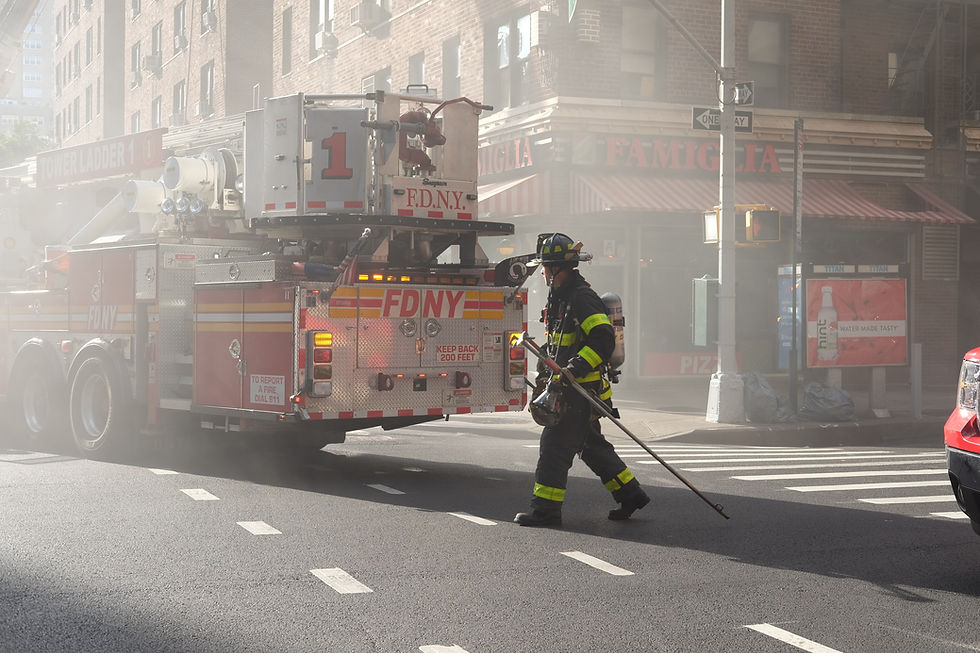What are the 4 Main Principles of Fire Safety?
- barbaraderecka
- Oct 23, 2024
- 3 min read
Fire safety is a crucial aspect of any building's management, whether it's a residential home, an office, or an industrial facility. Understanding fire safety principles can significantly reduce the risk of fire and ensure that everyone knows how to respond in case of an emergency. In this blog post, we will explore the four main principles of fire safety and how they relate to effective fire safety risk assessment.
1. Prevention
The first principle of fire safety is prevention. This involves taking proactive measures to eliminate potential fire hazards before they can cause harm. Prevention strategies include:
Regular Inspections: Conducting regular inspections of electrical systems, heating equipment, and other potential sources of ignition is essential. These inspections help identify faulty wiring or malfunctioning appliances that could lead to a fire.
Proper Storage: Flammable materials should be stored safely and away from heat sources. This includes chemicals, oils, and even paper products that can easily ignite.
Fire Safety Training: Educating employees or household members about fire hazards and safe practices is vital for prevention. Regular training sessions can help ensure everyone understands their role in maintaining a safe environment.
By implementing these preventive measures, you can significantly reduce the likelihood of a fire occurring in your premises.
2. Detection
The second principle focuses on detection systems that alert occupants to the presence of smoke or heat before a small issue escalates into a full-blown emergency. Effective detection systems include:
Smoke Alarms: Installing smoke alarms in key areas such as kitchens, hallways, and bedrooms is crucial for early detection. Regular testing and maintenance ensure these devices function correctly.
Heat Detectors: In areas where smoke alarms may produce false alarms (like kitchens), heat detectors are more suitable as they respond only to significant temperature increases.
Fire Alarm Systems: For larger buildings or commercial spaces, comprehensive fire alarm systems provide alerts through audible alarms and visual signals to warn occupants effectively.
Having reliable detection systems in place allows for timely evacuation and reduces property damage by enabling early intervention from emergency services.
3. Containment
Containment refers to strategies designed to limit the spread of fire once it has started. This principle focuses on creating barriers that prevent flames from moving quickly through a building:
Fire Doors: Installing self-closing fire doors can help contain fires within specific areas while providing safe escape routes for occupants.
Compartmentalisation: Designing buildings with compartments (fire-resistant walls) limits the movement of smoke and flames between different sections. This design is especially important in larger facilities where fires could spread rapidly without containment measures.
Sprinkler Systems: Automatic sprinkler systems are highly effective at controlling fires by dousing flames with water before they escalate out of control.
By implementing containment measures, you not only protect lives but also minimise property damage during a fire incident.
4. Evacuation
The final principle revolves around ensuring safe evacuation procedures are established and communicated effectively throughout your premises:
Evacuation Plans: Developing clear evacuation plans that outline escape routes and assembly points is essential for all building occupants. These plans should be visible throughout the building and regularly reviewed for effectiveness.
Drills: Conducting regular fire drills helps familiarise everyone with evacuation procedures so they know what to do when an alarm sounds. Drills should simulate real-life scenarios as closely as possible to prepare individuals for actual emergencies.
Accessibility Considerations: Ensure that all escape routes are accessible for individuals with disabilities or mobility issues. This may involve installing ramps or providing assistance during evacuations if necessary.
A well-planned evacuation strategy saves lives by ensuring everyone knows how to exit safely during an emergency situation.
Summary: The Importance of Fire Safety Risk Assessment
Understanding these four main principles—prevention, detection, containment, and evacuation—is vital for effective fire safety management within any environment. However, merely knowing these principles isn't enough; conducting regular fire safety risk assessments is equally important.
A comprehensive fire safety risk assessment evaluates potential hazards specific to your premises while identifying weaknesses in existing safety protocols. By regularly assessing risks associated with your environment—such as flammable materials present or outdated equipment—you can implement targeted strategies tailored specifically to your needs.




Comments